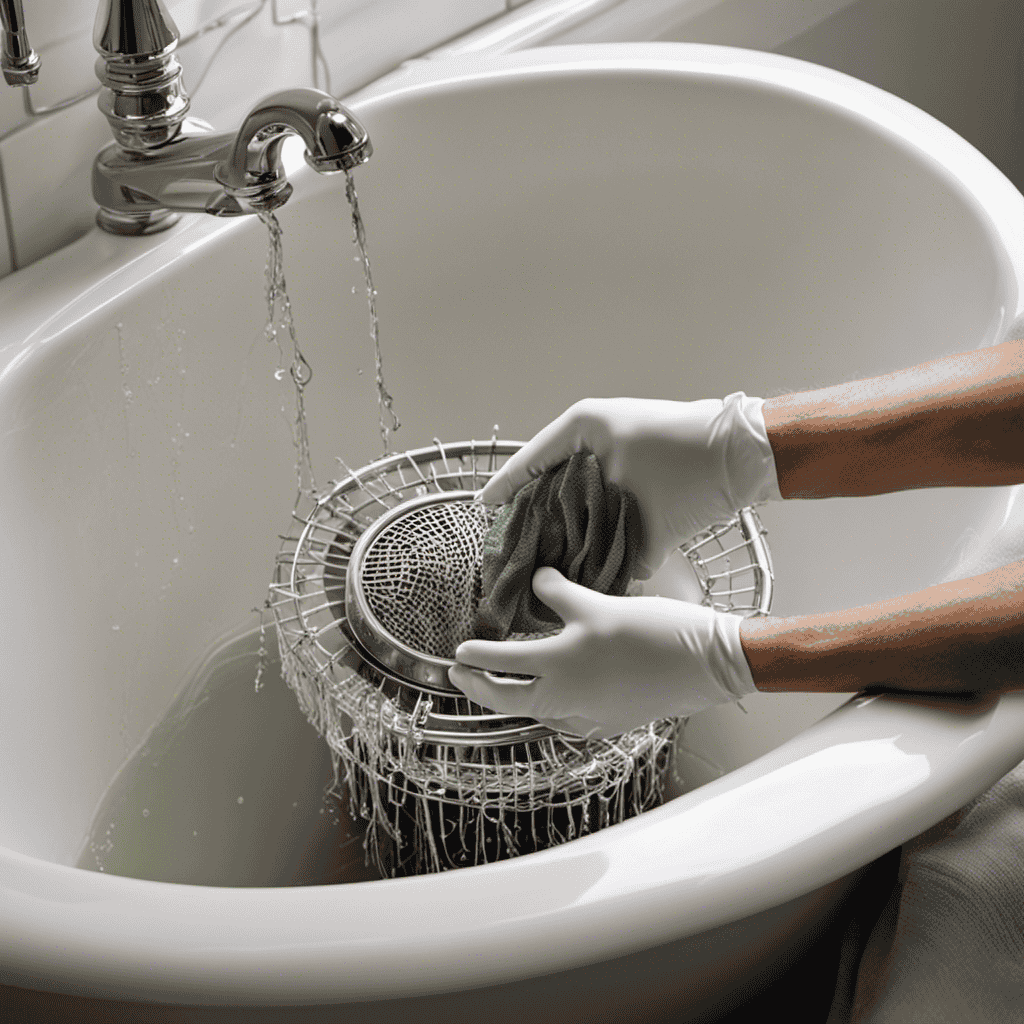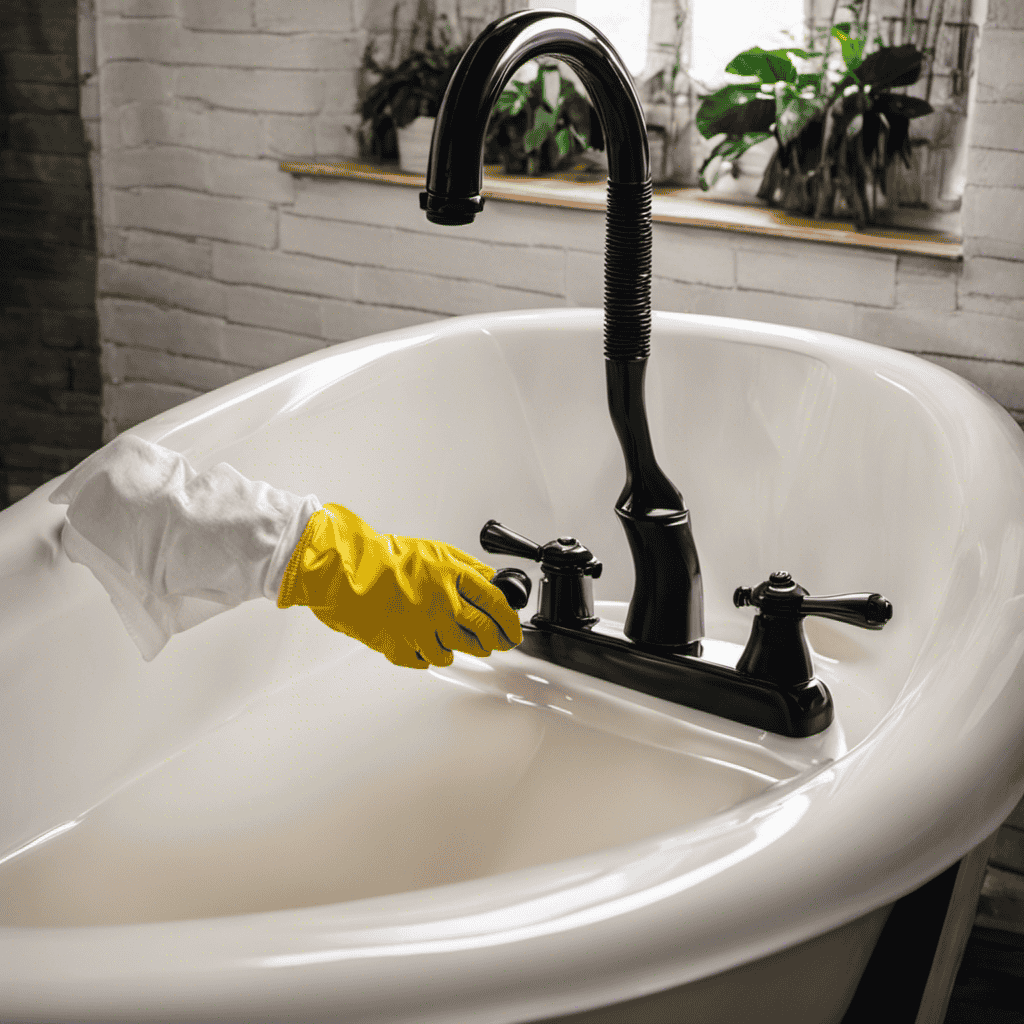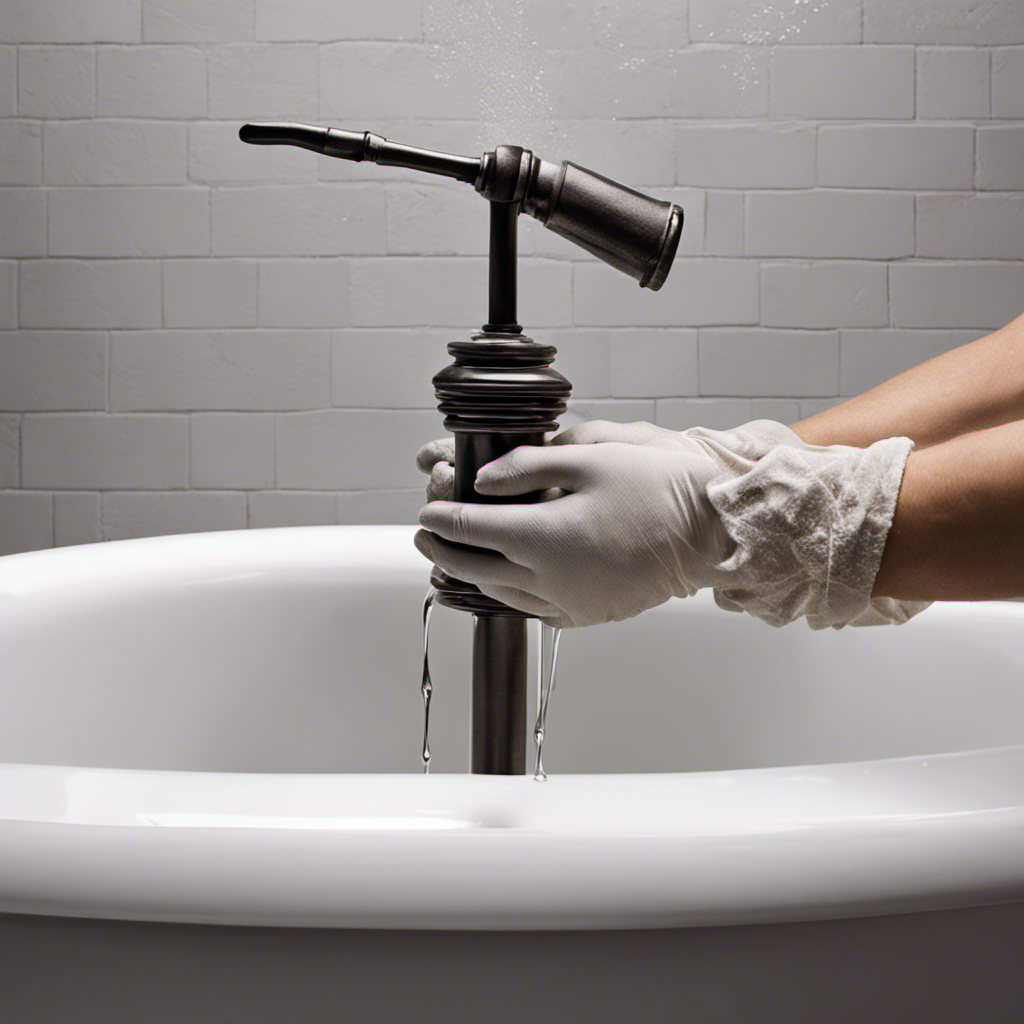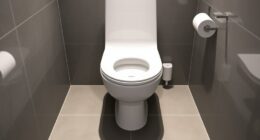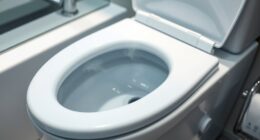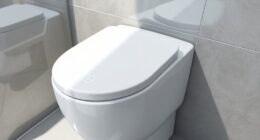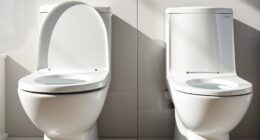Are you tired of dealing with a stubborn bathtub clog? Well, worry no more! In this article, we’ll guide you through a step-by-step process to fix that pesky clog in your bathtub.
From identifying the source of the problem to using a plunger or drain snake, we’ve got you covered.
Plus, we’ll share some natural remedies to try and prevent future clogs.
So, sit back, relax, and get ready to say goodbye to bathtub clogs once and for all!
Key Takeaways
- The common causes of bathtub clogs are hair buildup, soap scum, and foreign objects.
- Signs of a clogged bathtub drain include slow water drainage, standing water, gurgling sounds, and unpleasant odors.
- Plungers can be used to clear clogs, with different types of plungers for different types of clogs.
- If the clog persists, a drain snake can be used to remove the blockage.
Identifying the Source of the Clog
To start, you’ll need to figure out where exactly the clog is coming from. There are several common causes of bathtub clogs, such as hair buildup, soap scum, and foreign objects.
The first step is to observe the signs of a clogged bathtub drain. If you notice water draining slowly or standing in the tub after use, it’s likely there’s a clog. You may also hear gurgling sounds or detect unpleasant odors coming from the drain.
Once you’ve identified these signs, you can proceed to locate the source of the clog. Start by removing the drain stopper and using a flashlight to inspect the drain opening. Look for any visible blockages, such as hair or debris, that could be causing the clog.
Using a Plunger to Clear the Clog
Using a plunger can be an effective way to clear the clog in your bathtub.
There are different techniques for using a plunger depending on the type of clog.
For toilet clogs, make sure to use a plunger specifically designed for toilets as it has a flange that creates a better seal.
For bathroom use, there are two main types of plungers: the cup plunger and the accordion plunger.
The cup plunger is the most common and has a flat bottom, making it suitable for flat surfaces like sinks and bathtubs.
The accordion plunger, on the other hand, has a narrow bottom and is ideal for toilets and shower drains.
To use the plunger, place it over the drain and push down firmly, then pull up quickly to create suction.
Repeat this motion several times until the clog is cleared.
Once you have successfully cleared the clog using a plunger, you can move on to using a drain snake to remove any remaining blockage.
Using a Drain Snake to Remove the Blockage
The most effective way to remove the blockage in your drain is by using a drain snake. Here are the steps to follow:
- First, ensure that you have a drain snake that is long enough to reach the clog.
- Insert the drain snake into the drain, pushing it through the blockage.
- Rotate the drain snake clockwise to break up the clog and hook onto it.
- Slowly pull out the drain snake, taking care not to damage the pipes.
- Dispose of the clog and clean the drain snake thoroughly.
Using chemicals to dissolve the clog may seem like an easy fix, but it can be harmful to your pipes and the environment. Hiring a professional plumber is another option, but it can be costly. By using a drain snake, you can effectively remove the blockage yourself, saving time and money.
Trying Natural Remedies to Unclog the Bathtub
One option for unclogging your bathtub is to try natural remedies like baking soda and vinegar. These DIY bathtub unclogging methods can be effective and have the added benefit of being environmentally friendly.
Here’s a step-by-step guide on how to use baking soda and vinegar to unclog your bathtub:
- Start by removing any standing water from the bathtub.
- Pour half a cup of baking soda directly into the drain.
- Follow it with a cup of vinegar.
- Immediately cover the drain with a plug or a cloth to prevent the mixture from bubbling out.
- Let the mixture sit for about 30 minutes.
- Remove the plug or cloth and flush the drain with hot water.
Using natural remedies like baking soda and vinegar can help break down and dissolve the clog in your bathtub. This method is not only effective but also safe for your pipes and the environment. By using these natural remedies, you can avoid harsh chemicals and prevent further damage to your plumbing system.
Now that you’ve successfully unclogged your bathtub, let’s move on to preventing future clogs in the bathtub.
Preventing Future Clogs in the Bathtub
To prevent future clogs in your bathtub, make sure to regularly remove hair and debris from the drain. Here’s a step-by-step guide on how to keep your bathtub drains clear:
-
Use a drain cover: Install a drain cover to catch hair and larger debris before it goes down the drain.
-
Remove visible hair: After each shower or bath, take a few moments to remove any visible hair from the drain cover or around the drain opening.
-
Flush with hot water: Once a week, pour a kettle of hot water down the drain to help flush away any smaller particles and prevent buildup.
-
Use a drain cleaner: Every few months, use a drain cleaner specifically designed for bathtub drains to dissolve any accumulated soap scum or residue.
-
Proper disposal: Always dispose of hair and debris in a trash can, rather than letting it go down the drain where it can accumulate and cause clogs.
Conclusion
So, there you have it! You’ve successfully learned how to fix a bathtub clog.
Who knew that dealing with a clogged drain could be such an adventure? But fear not, with the right tools and a little bit of patience, you can conquer any clog that comes your way.
Remember to always identify the source of the clog, use a plunger or drain snake to clear it, and try out some natural remedies.
And hey, maybe you’ll even become the unclogging hero in your household. Just remember to prevent future clogs by being mindful of what goes down the drain.
Happy unclogging!
